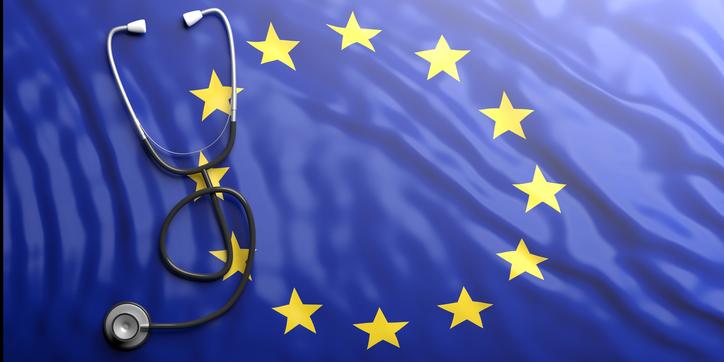In an increasingly interconnected world, access to healthcare when traveling abroad has become a significant concern for many. The European Health Insurance Card (EHIC) stands as a crucial tool for individuals traveling within the European Economic Area (EEA) and Switzerland. Offering essential health coverage during temporary stays, the EHIC is designed to ensure that European citizens do not face exorbitant costs for medical care while visiting other member countries.
This article delves into the various aspects of the EHIC, from who is eligible for it to how it can be obtained and its benefits.
What is the European Health Insurance Card (EHIC)?
The European Health Insurance Card (EHIC) is a card that provides citizens and residents of European Union (EU) member states, along with certain other European countries, access to state-provided healthcare services during temporary stays in another country. It covers medically necessary treatments, including those related to accidents, illnesses, or pre-existing medical conditions, that arise while the holder is abroad in a participating country.
The EHIC allows cardholders to receive medical treatment at the same cost as residents of the country in which they are visiting. This may mean free healthcare in some countries, but in others, it may mean only partial coverage, where the cardholder might still need to pay a portion of the cost.
Who is Eligible for the European Health Insurance Card?
Eligibility for the EHIC is generally available to individuals who are legally residing in an EU member state, as well as in countries that participate in the program, such as Norway, Iceland, Switzerland, and Liechtenstein.
To be eligible, applicants must meet the following criteria:
- Residents of an EU country or associated country: If you are legally residing in one of these countries, you may be eligible for the EHIC, regardless of your nationality.
- Public healthcare system contributors: Citizens who contribute to or are enrolled in the public healthcare system of their home country are typically eligible.
How Does the EHIC Work?
The EHIC allows travelers to access healthcare on the same terms as local residents in the country they are visiting. This means that if you are a visitor in another European country and you need medical attention, you can access healthcare at a rate based on the cost for residents of that country.
For example, if you are from Germany and visiting Spain, the card will entitle you to the same healthcare services at the same rate as Spanish nationals. However, the level of healthcare covered by the EHIC can vary depending on the specific country’s healthcare system. Some countries may require a co-payment or charge a small fee for certain services, while others may offer treatment free of charge.
What Does the EHIC Cover?
The EHIC covers a broad range of healthcare services, HealthPost advice, but it is important to remember that it is not a substitute for travel insurance. Here is a breakdown of what it generally covers:
- Emergency treatment: The card covers emergency medical care for illnesses or accidents that require immediate attention.
- Planned medical treatment: In some cases, individuals may also use their EHIC to receive planned medical treatments during their stay. However, this varies between countries, and approval from local health authorities might be necessary in advance.
- Chronic conditions: Treatment for ongoing or chronic conditions, such as diabetes or dialysis, can be covered if treatment is required during the trip.
- Maternity care: Some countries also provide coverage for maternity-related care, including prenatal care, during your stay.
- Reimbursement of costs: In some instances, if you pay for medical services upfront, you can request reimbursement for the costs incurred. However, the amount you are reimbursed will depend on the country’s public health system.
What the EHIC Does Not Cover
While the EHIC offers vital coverage, there are some limitations. The card does not cover:
- Private healthcare: If you choose to use private healthcare services rather than state-provided healthcare, the EHIC will not cover the costs.
- Cost of repatriation: The EHIC does not cover the cost of being transported back to your home country in the case of a serious illness or injury.
- Travel insurance: The EHIC does not act as a replacement for comprehensive travel insurance, which can cover a broader range of travel-related issues like lost luggage, flight cancellations, or coverage for extreme sports.
- Routine medical care: The EHIC is designed to provide access to healthcare for unexpected issues that arise during your stay. Routine medical care such as check-ups, vaccinations, or dental work is generally not covered.
How to Apply for the EHIC
The process for obtaining an EHIC varies from country to country. However, in most cases, the application process is straightforward and can often be completed online. Here’s a general guide to applying for the card:
- Visit the official health service website: Each country has a specific government website or health service portal where you can apply for the card. In the UK, for instance, this was managed by the National Health Service (NHS) until the UK left the EU, but the process still exists for those in the EU.
- Provide necessary documents: You will likely need to provide proof of your identity, your residency in the country, and, in some cases, proof of your enrollment in the public healthcare system.
- Receive your card: After approval, you will receive your EHIC in the mail. The card’s validity typically lasts for a few years, at which point you may need to renew it.
EHIC After Brexit
After the UK left the European Union, the situation regarding the EHIC changed for UK citizens. While they are no longer eligible for the EHIC as part of the EU, they can apply for a similar card called the Global Health Insurance Card (GHIC). The GHIC provides similar coverage to the EHIC but is only valid within the EU.
Benefits of the EHIC
- Cost-saving: One of the most significant advantages is the potential to save substantial amounts of money on healthcare expenses, which can be especially valuable in countries with high healthcare costs.
- Peace of mind: Knowing that you are covered for unforeseen medical emergencies while abroad offers peace of mind during your travels.
- Convenient and easy: The EHIC is easy to obtain and use. It allows you to access healthcare services efficiently and without the need to worry about complicated procedures when seeking treatment.
Conclusion
The European Health Insurance Card is an essential document for anyone traveling within the EU, the EEA, or Switzerland. It provides peace of mind, ensuring access to necessary medical treatment while abroad, often at little to no cost. While the EHIC is not a substitute for travel insurance, it is a valuable safety net for individuals facing unexpected health issues during their travels. Always remember that coverage and procedures vary from country to country, so it’s essential to familiarize yourself with the specific rules before you travel.
As healthcare systems differ across borders, taking additional steps to secure comprehensive travel insurance can help cover gaps in the EHIC’s coverage, ensuring a worry-free travel experience.




